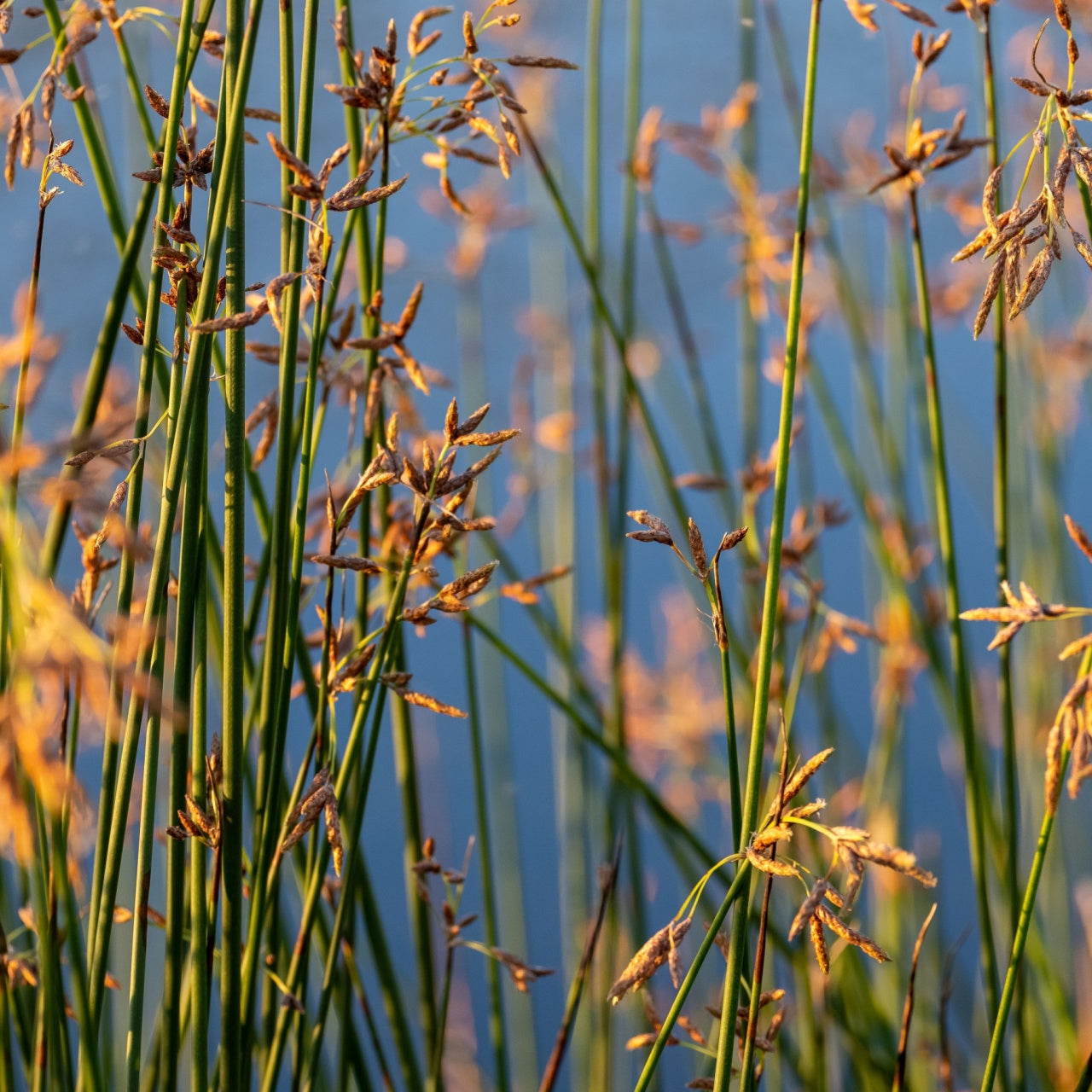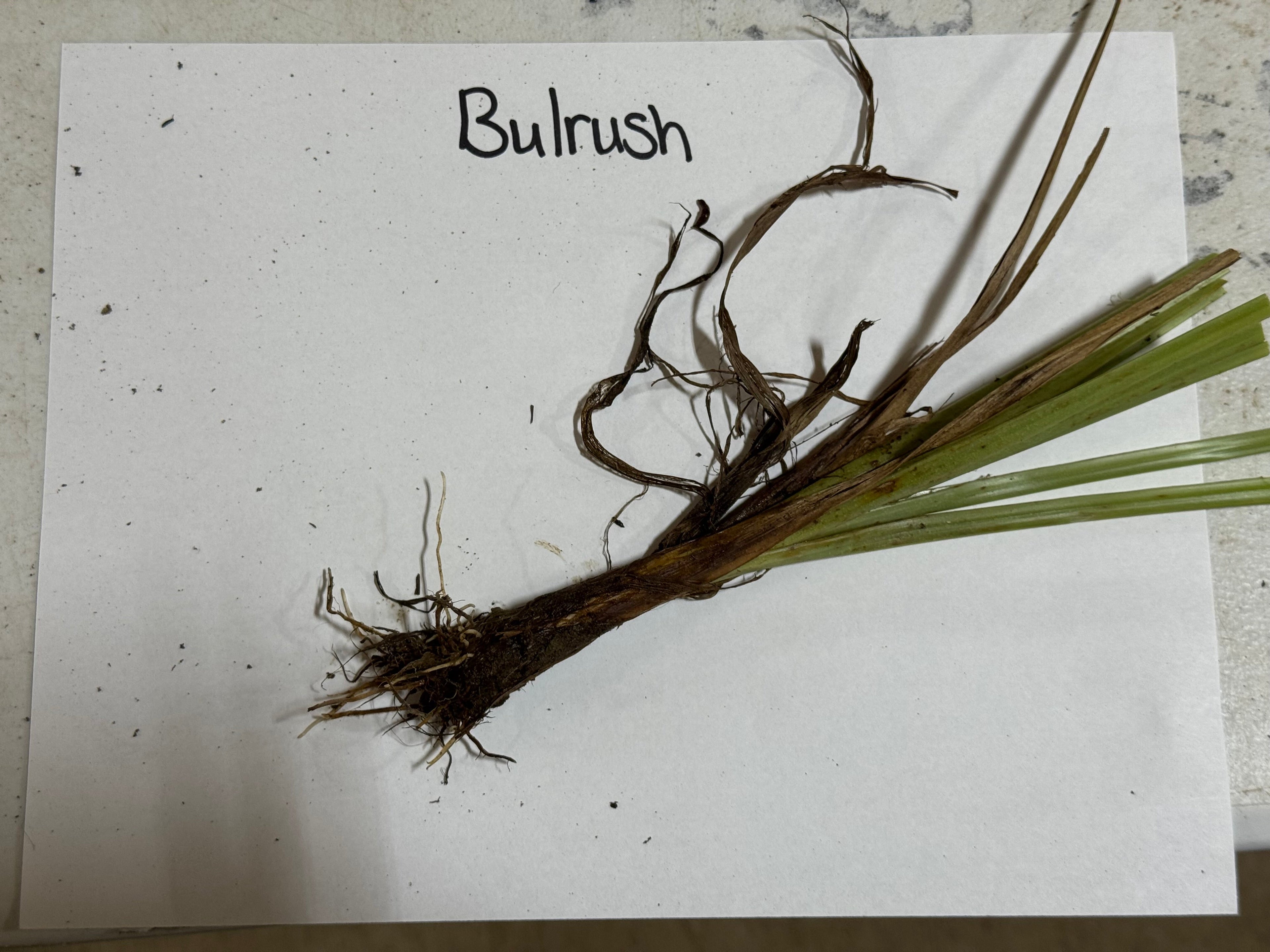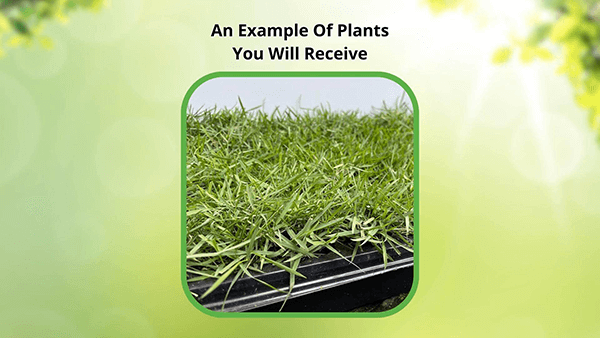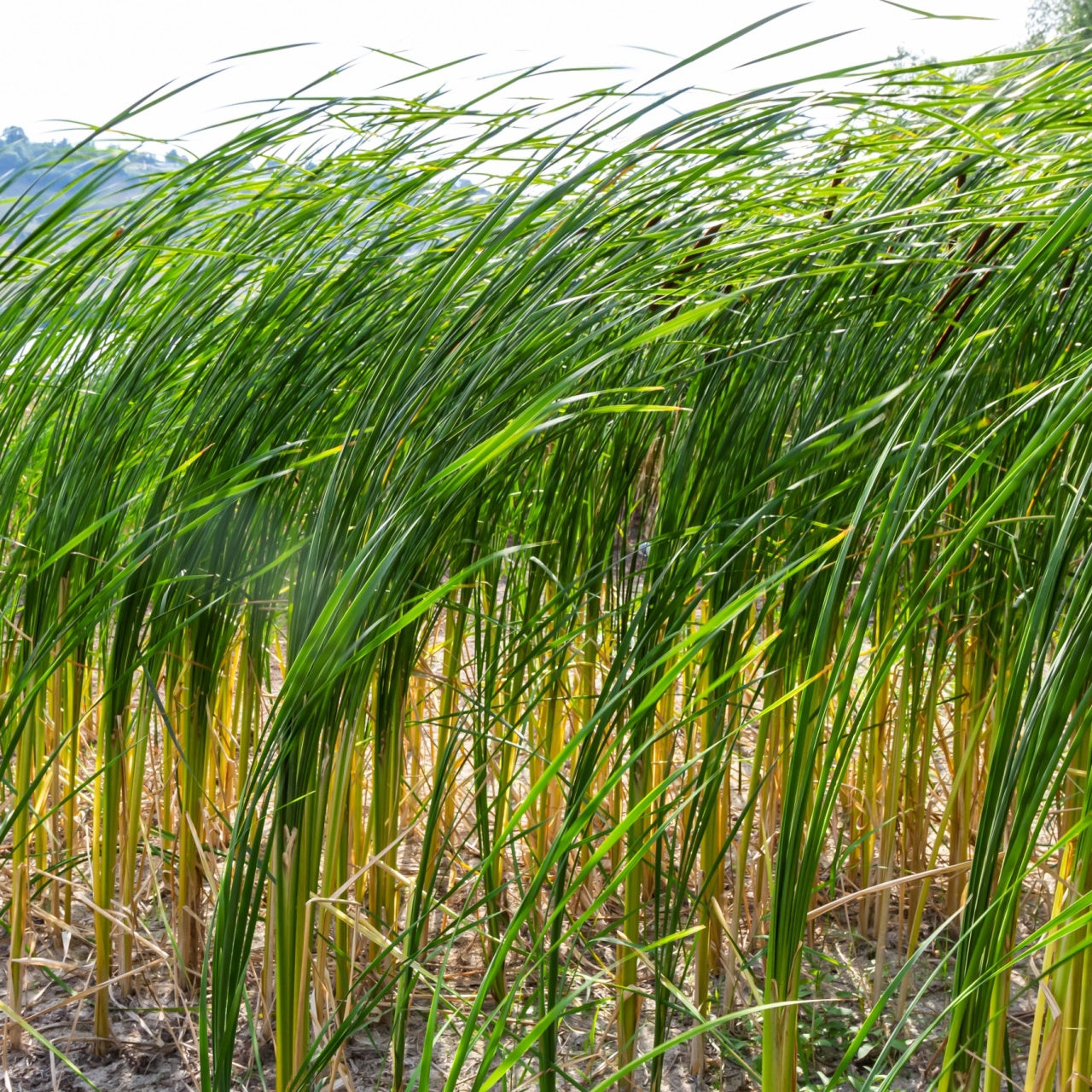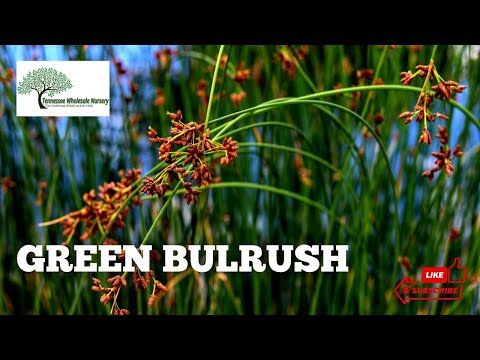Bulrush For Sale
Bulrush is a must-have for restoring life, stability, and charm to waterlogged areas. This semi-aquatic powerhouse not only stabilizes soil (and does so rather quickly), but this handsome grass can fulfill many aesthetic roles in a landscape.
The dense blades can even fervently grow upwards of 10 feet out of standing water, providing a dense, safe place for sensitive aquatic creatures to call home.
Plant Details - Bulrush Plants
Family: Cyperaceae
Light Requirement: Full Sun – Partial Shade
Water Needs: High
Height: 3-10 ft.
Spread: Indefinitely with clumping rhizomes
Growth Rate: Moderate-Fast
Bloom Time: Late Spring – Early Fall
Flower Color: Brown, Green
Wildlife Value: Provides food, shelter, and nesting material for wildlife
As a water-loving plant, a constant source of moisture is crucial for it to thrive. While this grass can tolerate various levels of sun exposure, it prefers full sun to achieve its maximum height and potential. Uniquely, it can even tolerate brackish or salty conditions where most grasses cannot.
This plant spreads moderately fast through underground rhizomes rather than traditional roots, which allows it to survive in tougher conditions. Amphibians love to lay eggs around the base of the plant, making it an environmentally responsible addition to any wetland-type garden.
Landscape Uses and Maintenance - Bulrush Plants (Scirpoides Holoschoenus)
This grass poses countless benefits and uses in a landscape. When planted in water, the root system filters out pollutants and impurities, generously improving water quality. As one of the rare plants that can grow in soggy soil, it is most valued as a strong choice for erosion control.
Bulrush will stand tall and add vertical interest to marshes, the outer edges of ponds, and even soggy rain or rock gardens. This grass may only require occasional thinning to prevent overcrowding, particularly if other plants are nearby.
Noteworthy Characteristics of Bulrush Plants
Bulrush flower heads can be long-blooming, lasting several months. The flowering structure is known as an inflorescence, producing dense clusters of airy, subtle flowers. These inflorescences may jut out at different angles, giving this grass a distinct, whimsical appearance. The leaves are distinctly sheathed, forming tight, upright, narrow shoots.
Exposure
Bulrushes thrive in full sun to partial shade. They prefer bright, direct light but can tolerate some shading, especially in hotter climates. Ensure they have consistent moisture for optimal growth and health.
Height at Maturity
Usage
Wetland Plant
Shipped As
Bare-root
Ships
USPS
Planting Zones
4-9
